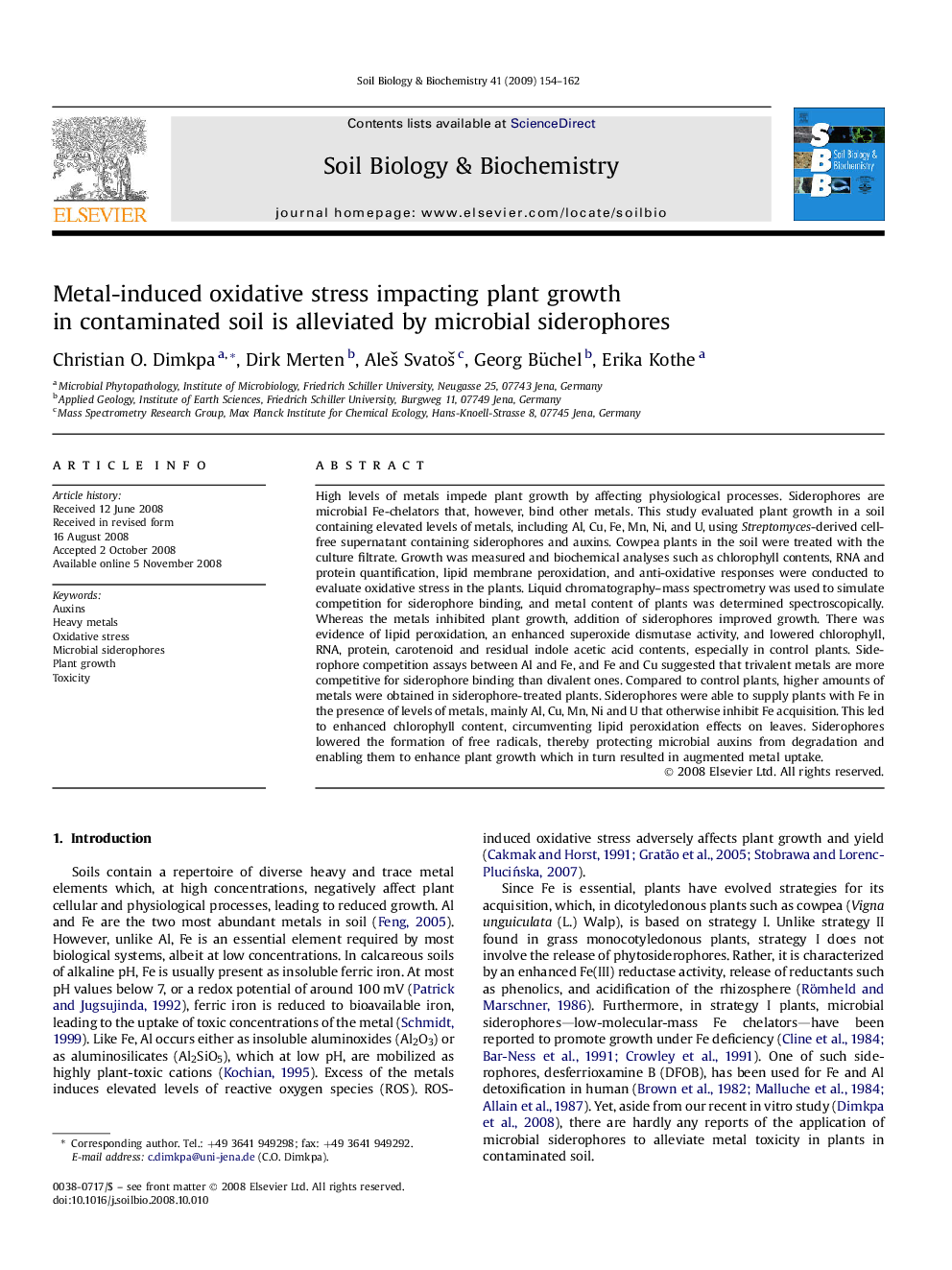| Article ID | Journal | Published Year | Pages | File Type |
|---|---|---|---|---|
| 2026820 | Soil Biology and Biochemistry | 2009 | 9 Pages |
High levels of metals impede plant growth by affecting physiological processes. Siderophores are microbial Fe-chelators that, however, bind other metals. This study evaluated plant growth in a soil containing elevated levels of metals, including Al, Cu, Fe, Mn, Ni, and U, using Streptomyces-derived cell-free supernatant containing siderophores and auxins. Cowpea plants in the soil were treated with the culture filtrate. Growth was measured and biochemical analyses such as chlorophyll contents, RNA and protein quantification, lipid membrane peroxidation, and anti-oxidative responses were conducted to evaluate oxidative stress in the plants. Liquid chromatography–mass spectrometry was used to simulate competition for siderophore binding, and metal content of plants was determined spectroscopically. Whereas the metals inhibited plant growth, addition of siderophores improved growth. There was evidence of lipid peroxidation, an enhanced superoxide dismutase activity, and lowered chlorophyll, RNA, protein, carotenoid and residual indole acetic acid contents, especially in control plants. Siderophore competition assays between Al and Fe, and Fe and Cu suggested that trivalent metals are more competitive for siderophore binding than divalent ones. Compared to control plants, higher amounts of metals were obtained in siderophore-treated plants. Siderophores were able to supply plants with Fe in the presence of levels of metals, mainly Al, Cu, Mn, Ni and U that otherwise inhibit Fe acquisition. This led to enhanced chlorophyll content, circumventing lipid peroxidation effects on leaves. Siderophores lowered the formation of free radicals, thereby protecting microbial auxins from degradation and enabling them to enhance plant growth which in turn resulted in augmented metal uptake.
